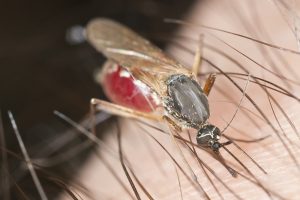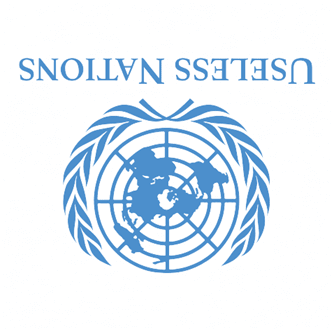Tropical disease experts are predicting a return of the historically devastating disease yellow fever to the United States. Yellow fever causes 30,000 deaths annually in South America and Africa, but there are concerns the deadly disease will be the cause of future epidemics here.
There have been no active outbreaks of the viral disease in the United States since 1905, but other tropical diseases have made appearances. Earlier this year, several cases of malaria turned up in Florida. Mosquitoes have recently tested positive for West Nile virus in Texas. Zika, dengue, and chikungunya viruses have also been identified locally in the past few years.
WHAT IS YELLOW FEVER?
Yellow Fever is caused by an arbovirus (a virus transmitted through the bite or sting of an insect vector) in the flaviiviridae family. In this case, the vector is a bite from the mosquito known as Aedes Aegypti.
Once the virus has entered the human body, symptoms may appear within 3 to 6 days. Not everyone has symptoms; those who do experience headache, muscle pain, and nausea and vomiting. In most cases, symptoms subside in 3 to 4 days. Surviving the disease usually means lifelong immunity.
An unlucky 15-20 percent of victims, however, progress to a more serious second phase, often shortly after an apparent recovery. These develop high fever and inflammation of the liver and kidneys. Liver malfunction leads to a condition called “jaundice,” a yellowing of the skin and eyes, hence the name “yellow fever.” Bleeding in the GI tract leads to vomiting blood, sometimes black in appearance, in late stages. A death rate of 20-60 percent due to organ failure can be expected in these cases.
HISTORY OF U.S. YELLOW FEVER OUTBREAKS
American history is peppered with yellow fever epidemics reaching as far north as Philadelphia, where 5000 deaths were recorded from the disease in 1793. Most outbreaks, however, occurred in Southern seaports (New Orleans, Galveston, Charleston) or along the Mississippi (Vicksburg, Memphis). The New Orleans epidemic of 1853 killed almost 10 percent of the city’s population.
Back then, the disease was sometimes referred to as “yellow jack.” That was the name of the nautical flag that ships arriving from the Caribbean raised to indicate a quarantine had been imposed.
Some now-forgotten yellow fever epidemics killed more U.S. citizens than more famous disasters of the time, such as the Great Chicago Fire or the San Francisco earthquake. The last major outbreak was in New Orleans in 1905, when 1000 people perished.
But that was then, this is now. Why are experts becoming more concerned about small upticks in diseases that are mostly seen in equatorial regions of Africa and South America?
WHY NOW?
 mosquitoes breed in standing water
mosquitoes breed in standing water
The health establishment blames climate change, population explosions, poverty, and increasing urbanization. El Nino events mean warmer temperatures and more rainfall, good conditions for mosquitoes. Growth spurts in places like Miami and Tampa mean many more potential victims than in previous eras, especially in poverty-stricken areas with poor mosquito control policies.
A factor you won’t hear much about is what authorities refer to as “shifting patterns of human migrations,” code words for the current crisis in illegal immigration. People crossing the border from at-risk areas are rarely vetted (medically or otherwise). As such, it stands to reason that some might bring infectious diseases up North into the U.S.
Health authorities worry, correctly, that we are unprepared for an outbreak of yellow fever, which has no known cure and kills a larger percentage of its victims than COVID-19. Mosquito control programs aren’t based on a national standard: They are usually administered through counties. The quantity and quality of resources vary greatly from place to place.
The main concern is that U.S. citizens aren’t vaccinated against yellow fever, nor is the vaccine part of the Strategic National Stockpile; therefore, the entire population is vulnerable to it. A vaccine is available but it uses live virus, is expensive, not made in large quantities, and can have serious effects on those with weakened immune systems. That means a sizeable yellow fever epidemic could run rampant through the entire U.S. population before the government can effectively combat it.
Some, however, believe there’s hope. In response to the threat of emerging infectious diseases, the White House established the Office of Pandemic Preparedness and Response. So far, it has concentrated on coronavirus, influenza, and other known pandemic illnesses. But the department could tackle mosquito-borne infection if so directed by a vigilant administration.
Yellow fever is common in 13 Latin-American countries and 34 African countries. It’s not yet a problem in 21st century America. That means we have an opportunity: Prioritize a plan of action for an outbreak now, and yellow fever may be just a bump in the road, not the end of the road, for many U.S. citizens in the future.
Joe Alton MD
Hey, don’t forget to check out our entire line of quality medical kits (including suture kits) at store.doomandbloom.net. Also, our Book Excellence Award-winning 700-page SURVIVAL MEDICINE HANDBOOK: THE ESSENTIAL GUIDE FOR WHEN HELP IS NOT ON THE WAY is now available in black and white on Amazon and in color and color spiral-bound versions at store.doomandbloom.net.










 jaundice
jaundice















